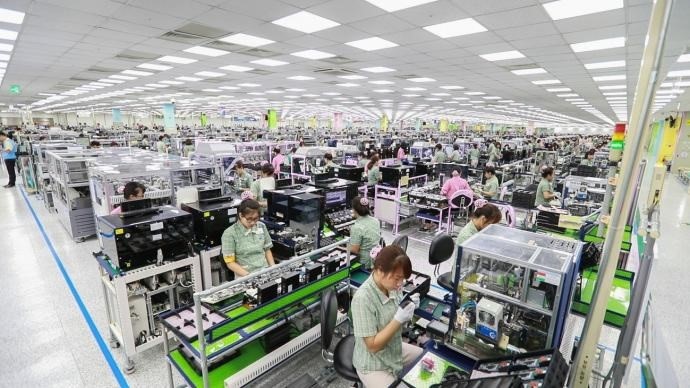On September 21, 2024, the Viet Nam government officially announced its semiconductor industry development strategy, aiming to establish 1 chip manufacturing plant and 10 packaging and testing plants by 2030, and increase the annual revenue of the semiconductor industry to 100 billion US dollars by 2050. The core concept of this strategy is "C=SET+1", where "C" stands for chips, "S" stands for specialty semiconductors, "E" stands for electronics industry, "T" stands for talent, and "+1" emphasizes Viet Nam's new position in the global semiconductor supply chain.
Three-stage development strategy
Viet Nam's semiconductor development plan is divided into three phases:
1. Phase 1 (2024-2030): It is planned to establish 100 semiconductor design companies, 1 small chip manufacturer and 10 packaging and testing companies, with an annual revenue target of 25 billion US dollars and an annual revenue of more than 225 billion US dollars in the electronics industry. This phase will focus on the development of specialized semiconductor products for multiple industries and attract foreign direct investment (FDI) to strengthen the industry's base capabilities.
2. The second phase (2030-2040): The goal is to form 200 semiconductor design companies, 2 chip manufacturers and 15 packaging and testing companies, with an annual revenue target of 55 billion US dollars and an annual revenue of more than 485 billion US dollars in the electronics industry. In this phase, we will gradually realize the in-house design and production of special-purpose semiconductor products.
3. The third stage (2040-2050): It is planned to establish 300 semiconductor design enterprises, 3 chip manufacturers and 20 packaging and testing enterprises, with an annual revenue target of 100 billion US dollars and an annual revenue of more than 1,045 billion US dollars in the electronics industry. At this stage, we will focus on mastering R&D capabilities in the semiconductor field and promoting the high-end of the industry.

Figure: Viet Nam announced a three-step blueprint for the semiconductor industry (picture from the Internet)
Talent & Technology Development
The Viet Nam government recognizes that talent is the key to the development of the semiconductor industry. According to the plan, by 2030, Viet Nam will train at least 50,000 high-quality talents in the semiconductor field, including 42,000 engineers and 7,500 master's students. By 2050, more than 100,000 engineers are expected to be involved in all aspects of the semiconductor industry.
In addition, Viet Nam will strengthen cooperation with international semiconductor companies to attract global technology and investment. For example, well-known companies such as Intel and Samsung have established production bases in Viet Nam, which has laid a good foundation for Viet Nam's semiconductor industry.
Policy support and market potential
The Viet Nam government has provided a number of policies supports for the development of the semiconductor industry, including tax incentives and investment incentives, aiming to attract more foreign-funded enterprises to settle down. At the same time, Viet Nam's geographical location, abundant human resources and relatively low production costs make it an important base for global electronics manufacturing. In 2022, Viet Nam's electronics exports totaled US$114 billion, making it the world's 12th largest electronics export market.
Challenges and prospects
Although Viet Nam's semiconductor industry has great potential for development, it still faces many challenges. First of all, Viet Nam's semiconductor industry is currently mainly focused on low-margin assembly and packaging, and has not yet had an advantage in design and production. Secondly, the shortage of talent and the lack of infrastructure are also the main constraints on development. Viet Nam's power supply is unstable, and the semiconductor industry has an extremely high demand for electricity, which affects production efficiency to a certain extent.
However, Viet Nam's semiconductor industry development strategy shows new hope in the global supply chain. Through policy support, international cooperation and talent training, Viet Nam is expected to occupy a place in the semiconductor market in the future. With the restructuring of the global semiconductor industry, Viet Nam's geographical advantages and policy advantages will be further highlighted, becoming an important player in the global semiconductor industry.
In short, Viet Nam's development blueprint for the semiconductor industry is not only an optimization of its own economic structure, but also a positive response to the diversification of the global semiconductor supply chain. In the future, whether Viet Nam can overcome the existing challenges and achieve the long-term development of its semiconductor industry deserves our continued attention.






